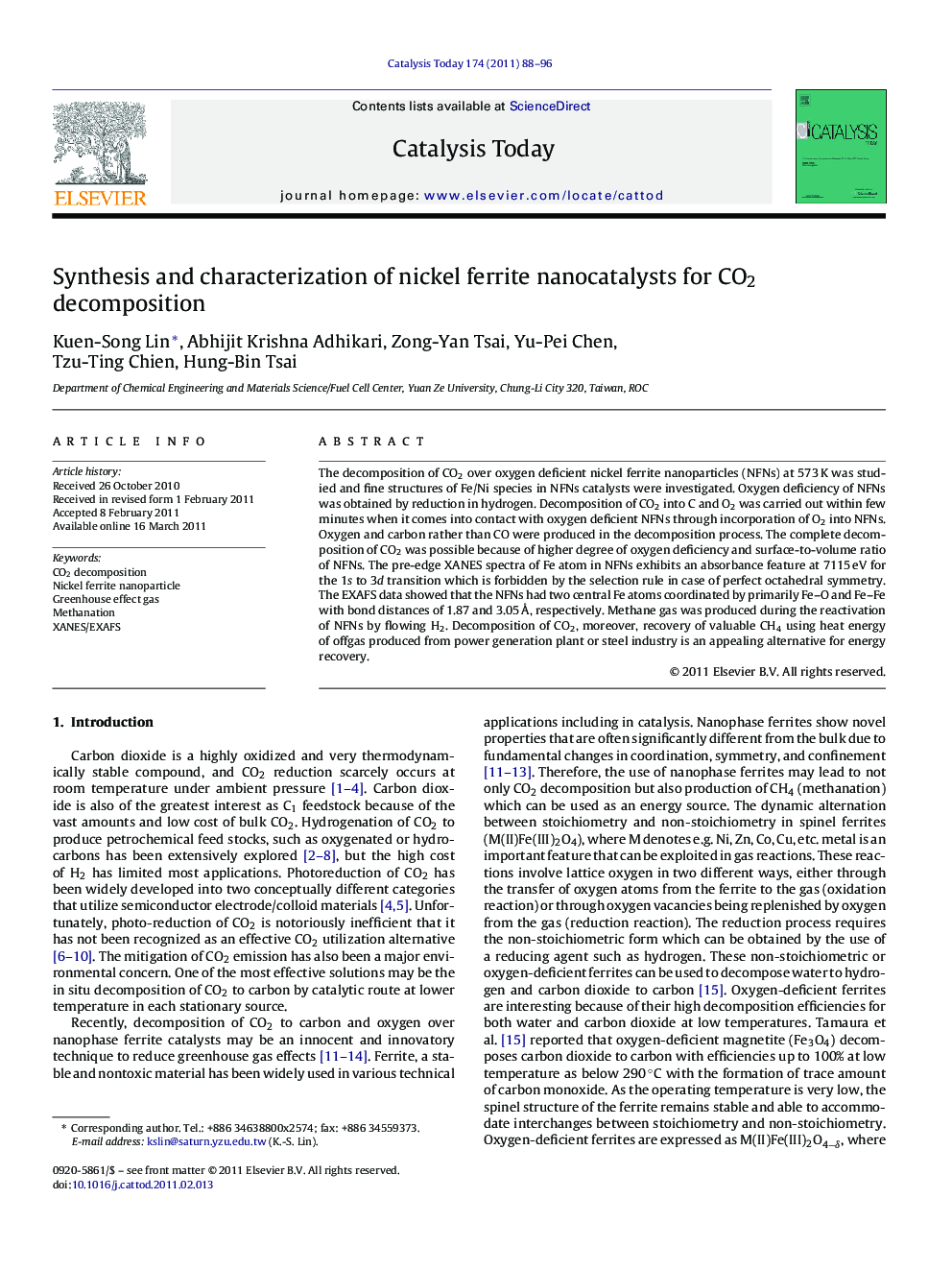| Article ID | Journal | Published Year | Pages | File Type |
|---|---|---|---|---|
| 55910 | Catalysis Today | 2011 | 9 Pages |
The decomposition of CO2 over oxygen deficient nickel ferrite nanoparticles (NFNs) at 573 K was studied and fine structures of Fe/Ni species in NFNs catalysts were investigated. Oxygen deficiency of NFNs was obtained by reduction in hydrogen. Decomposition of CO2 into C and O2 was carried out within few minutes when it comes into contact with oxygen deficient NFNs through incorporation of O2 into NFNs. Oxygen and carbon rather than CO were produced in the decomposition process. The complete decomposition of CO2 was possible because of higher degree of oxygen deficiency and surface-to-volume ratio of NFNs. The pre-edge XANES spectra of Fe atom in NFNs exhibits an absorbance feature at 7115 eV for the 1s to 3d transition which is forbidden by the selection rule in case of perfect octahedral symmetry. The EXAFS data showed that the NFNs had two central Fe atoms coordinated by primarily Fe–O and Fe–Fe with bond distances of 1.87 and 3.05 Å, respectively. Methane gas was produced during the reactivation of NFNs by flowing H2. Decomposition of CO2, moreover, recovery of valuable CH4 using heat energy of offgas produced from power generation plant or steel industry is an appealing alternative for energy recovery.
Graphical abstractFigure optionsDownload full-size imageDownload high-quality image (76 K)Download as PowerPoint slideHighlights► Nano Ni-ferrites are highly effective in decomposing CO2 to C and O2 with trace CO. ► Nano Ni-ferrites with an average diameter of 20 nm are identified by TEM/FE-SEM. ► Nanophase Ni-ferrites have a very high surface-to-volume ratio for CO2 reduction. ► EXAFS data show that ferrite has two central Fe atoms coordinated by Fe–O and Fe–Fe. ► Valuable CH4 can be recovered by CO2 decomposition over Ni-ferrite nanoparticles.
